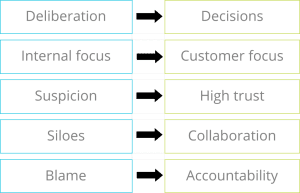
Academia and commercialism: a powerful combination?
The answer is a simple one – of course it is. Or should be. But it’s not a balance that’s easily achieved, so let’s look at what gets in the way and how we can make sure it is used as a powerful combination.
Based on our experience working with the HE sector there are three main challenges:
1. Speaking the same language
If you were to ask what is meant by ‘academia’ and ‘commercialism’ you might get very different answers depending on the people you asked.
To stereotype a little, an academic’s honest view of commercialism might include phrases like “It’s a necessary evil”, “Its just all about the numbers”, “They really don’t understand the lecturer/student relationship” and “They don’t take our views and experience into account”.
And from the commercial side about academia, “They just don’t get the urgent need to change”, “Its so much about protecting what they have”, “It’s all about knowledge and nothing about value” and “They resist doing anything differently”.
Creating a common language is critical to successful collaboration and innovation. Successful universities make their overriding shared purpose the success of the university. It is not about ‘sides’, powerbases or who has most clout. They have accepted at a deep level the need to work together and transcend local, professional or personal agendas.
To create a common language you need a dialogue; this means getting the senior team in the same place with enough space and time to explore each other’s perspectives. Understanding each other’s objectives, motives, pressures, hopes and fears takes the team to a new level of insight. Trust strengthens as people understand that there is overriding good intent to have the university succeed and that each party has strengths to bring to the table.
This may involve the leaders stepping outside their comfort zones and consciously adopting an open and curious mindset. Which leads us on to challenge #2
2. Fear of letting go
When we care passionately about something it can be hard to consider changing things about it. We get too close to it and fear that if we let go of what we value it will not be looked after properly and we will suffer as a result.
The emotional challenges in organisational change are well documented and if not addressed will slow down or entirely reject change.
Fears need to be addressed head on, openly, non-judgementally and with strong listening. Once fears have been expressed and heard, the energy changes and dialogue becomes easier.
If emotional intelligence ((EQ), the ability to identify, assess, and control one’s own emotions, the emotions of others, and that of groups, Goleman 2014) and high-quality listening are not strengths, facilitation of these dialogues becomes invaluable.
We are also finding that Universities are increasingly using coaching to strengthen leaders’ change capability. A structured coaching programme creates a shared context for change, sharpens focus on the mindset and behaviours needed for success, leaving room for individuals to play to strengths and work on blindspots that are relevant to them.
This is proving to be a catalytic and is creating a new sense of shared purpose and common language for senior teams. As a result, change and innovation are becoming easier and quicker.
3. Creating focus and pace
Changing culture at pace is a challenge we hear all the time in the HE sector. When the operational rhythm of a university has been historically slow, bringing about a tangible shift in mindset and behaviours at pace can feel daunting.
The most effective way is to define and agree on a small number of key change areas and then focus on doing them well. Often senior teams overreach with their change agenda and end up doing a bit of too many things, usually resulting in frustration, cynicism and disappointment.
Much better to define no more than three priority culture shifts, or ways of working (WOWS,) that by being addressed will drive wider change and create that ‘one team’ dynamic described above.
This gives everyone a greater sense of certainty that it can be done and crucially provides time and space for leaders to keep focusing on ‘business as usual’.
For example:

Next action?
80% of culture is generated and reinforced by leaders so this is where input will deliver greatest payback.
Pecan has developed a 100 Day Leadership Programme to catalyse and support leaders in making and fast-tracking change, both in how the leadership team works together and how that team role models and leads others.
Image: Doug Kelley, unsplash.com
